To estimate building costs correctly, fix scope from drawings, choose the right method for your RIBA stage (order-of-cost, elemental, unit-rate or analytical), measure to RICS NRM, benchmark, then add prelims, overhead and profit, risk, fees and inflation with all assumptions stated.
This is an educational guide for small builders and trades on how to estimate building costs without guessing. It focuses on method, measurement and presentation rather than price lists. For a deeper framework, see Construction Cost Estimating – A Comprehensive Guide and RICS New Rules of Measurement – A Complete Guide.
Executive Answer
Scope-first estimating workflow: fix scope and information; select method by RIBA stage; measure to NRM; price with benchmarks and supplier quotes; add prelims, overhead and profit, risk, fees and inflation; present a clear basis and exclusions. Region: England (GB) VAT: trade methodology; any examples are shown excluding VAT Units: m², m, l/m, m³, per point
- Cost Summary
- Assumptions and Methodology
- Detailed Method & Checklists
- Programme and Durations
- Regional Variation
- Inclusions and Exclusions
- Risks and Allowances
- FAQs
- Sources
- Key Facts & Assumptions (At a Glance)
Next step: Request a Custom Estimate for your drawings and scope. This article is part of our Pillar series; for the full framework, read Construction Cost Estimating – A Comprehensive Guide.
Cost Summary
This section explains structure, not price. Your estimate should be built up in this sequence:
- Direct works by element or work section (measured and priced)
- Preliminaries (site set-up, supervision, welfare, scaffolds)
- Overhead and Profit (contractor margin applied to net works)
- Professional and statutory fees (planning, building control, engineers)
- Risk and contingency (by design stage and known unknowns)
- Inflation/time risk (allow for start date and tender period)
For homeowners seeking price context, use our pillar on Construction Cost Estimating – A Comprehensive Guide; this page stays theory-led.
Assumptions and Methodology
Choose the right method for your RIBA stage
RIBA stages organise project information; your estimating method should match the maturity of the design and data. NRM defines the rules for order-of-cost estimates and elemental cost plans; use them to improve consistency and transparency.
| RIBA stage | Preferred estimating method | Main inputs | Primary output | Notes |
|---|---|---|---|---|
| 0–1 | Order of cost (NRM 1) | Brief, area, benchmarking | Affordability check | Use recognised benchmarks and location factors; record key assumptions |
| 2–3 | Elemental cost plan (NRM 1) | Drawings, outline specs, quantities by element | Design-to-cost targets | Structure, envelope, services split; informs value engineering |
| 4 | Analytical/unit-rate build-ups | Detailed take-off, supplier quotations | Pre-tender estimate (PTE) | Ready for tender; include prelims, risk and inflation allowances |
| 5 | Tender reconciliation & control | Contractor returns, clarifications | Agreed contract sum | Post-tender value engineering where justified |
Measure to RICS NRM
Use consistent units: m² for floors and walls, l/m for edges and services, m³ for excavations, “per point” for M&E. Elemental quantities and definitions should follow NRM to stay consistent with industry practice.
Benchmark, then replace with quotes
Start with credible benchmarks and location factors; as information matures, replace allowances with current supplier and subcontractor quotations (materials, plant, access). Keep a change log so you can track what moved and why.
Present the estimate clearly
- State base date, VAT stance and region
- Show quantities, unit rates, allowances, prelims, OHP, fees, risk and inflation as separate lines
- Declare all exclusions and client-supplied items
- Export a summary page that a non-specialist can read
Detailed Method & Checklists
Estimator’s workflow at a glance
- Scope freeze: capture assumptions for structure, envelope, MEP, fit-out and siteworks
- Take-off: measure by element to NRM; record waste factors and laps
- Pricing: apply calibrated unit rates; seek supplier quotes for key trades
- Prelims: build site set-up, welfare, supervision, scaffolds, traffic and insurances
- OHP: apply overhead and profit to net trade cost
- Fees: add planning/building control, design and third-party costs
- Risk & inflation: contingency and time-based allowances by stage and start date
- Review: sensitivity test and red-team review before issue
Elements and typical inclusions (for method only)
| Element (NRM) | Measured in | What to consider in the estimate |
|---|---|---|
| Substructure | m³, m | Excavation, concrete class, reinforcement, blinding, cart-away |
| Superstructure | m², m | Masonry or frame, floor/roof build-ups, openings, lintels/RSJs |
| Envelope | m² | Wall, roof, glazing systems, membranes, insulation, flashings |
| Internal finishes | m² | Plasterboard, skim, joinery, floor/wall finishes |
| Building services | per point, m | Electrics, heating, plumbing, ventilation, controls, testing |
| External works | m², m | Drainage, paving, fencing, landscaping, utilities connections |
| Preliminaries | % of net | Welfare, scaffolds, supervision, H&S, temp works, permits |
Estimate structure formula
Total (ex VAT) = Direct trades + Preliminaries + Overhead & Profit + Fees + Risk + Inflation
Quality checks before you send
- Does every allowance have a stated source or quote?
- Are prelims time-related and linked to programme?
- Have you applied the correct VAT stance?
- Have you signed the estimate with a base date and location?
- Does the front page summarise scope and exclusions in plainer English than the BOQ?
Programme and Durations
- Information gathering: drawings/specs 1–2 weeks depending on design stage
- Small residential take-off and estimate: typically 1–3 working days from complete information; 24-hour option available for straightforward scopes
- Tender period: 2–4 weeks with 1–2 weeks for clarifications/value engineering
- Lead times affecting prelims: windows, structural steel, kitchens, MEP plant
Regional Variation
Use recognised location factors when benchmarking early. London and inner M25 can track above GB averages, while some regions track below; always re-base with local supplier quotes and current tender price trends.
Inclusions and Exclusions
Include in your estimate
- Measurement basis and method (NRM reference)
- Drawings list and revision status
- Preliminaries build-up and time basis
- Risk allowances and what they cover
- Inflation assumptions and start date
Declare as exclusions if not covered
- Abnormals (poor ground, party wall, utility upgrades)
- Planning conditions, heritage constraints, Section 106/CIL
- Client-supplied items and loose furniture
Further reading: Construction Cost Planning and Control.
Risks and Allowances
- Contingency: align to design maturity and known unknowns; reduce as design fixes
- Inflation: apply a base date and a start date adjustment in line with recognised indices
- Regulatory duties: plan health and safety under CDM 2015; identify dutyholders early
- Benchmark risk: note the source and age of any benchmark used
For strategy on pricing and submissions, see Tender and Bid Strategy.
FAQs
What is the best way to start an estimate?
Freeze scope and assumptions, list drawings and revisions, then choose an estimating method that matches your RIBA stage. Measure to NRM so your quantities and definitions are consistent.
What is the difference between an order-of-cost estimate and an elemental cost plan?
An order-of-cost estimate checks affordability early using benchmarks and high-level metrics. An elemental cost plan measures the design by element (structure, envelope, services) to guide design-to-cost decisions.
Do I have to follow NRM?
Strictly speaking, you can price how you like, but NRM gives shared definitions and rules so others can read and compare your estimates. It reduces disputes and speeds up reviews.
How do I deal with preliminaries?
Tie preliminaries to programme duration. Include welfare, scaffolds, supervision, insurances and traffic management; show them as a separate line before OHP.
Where should risk and inflation sit?
Risk and contingency should reflect design maturity and known unknowns. Inflation should reflect start date and fixed-price period, not a generic percentage.
Sources
- RICS New Rules of Measurement (NRM)
- RIBA Plan of Work
- BCIS: UK benchmarking and indices
- IPA Cost Estimating Guidance (UK Government)
- HSE: CDM 2015 dutyholder summary
Key Facts & Assumptions (At a Glance)
- Region: England, GB
- VAT stance: ex VAT in examples
- Units: m², m, l/m, m³, per point
- Measurement: RICS NRM; outputs aligned with RIBA stages
- Estimate structure: Direct trades, Prelims, OHP, Fees, Risk, Inflation
Disclaimer: This article explains method only. For live pricing, use supplier quotations and current indices at the base date.











